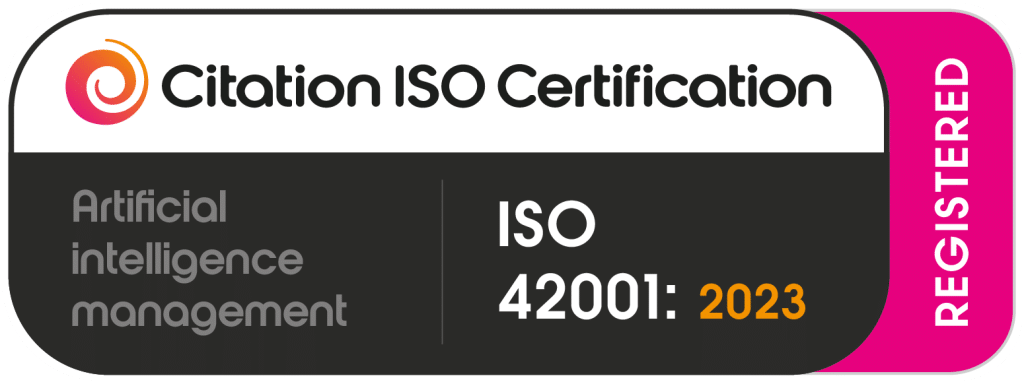Transfer Learning
Transfer learning has emerged as a pivotal concept in the realm of artificial intelligence and machine learning, revolutionizing the way models are trained and applied across various domains. This approach allows for the leveraging of knowledge gained from one task to enhance performance on a different but related task. As organizations increasingly seek efficient ways to utilize their data, understanding the nuances of transfer learning becomes essential for harnessing its full potential. The ability to transfer knowledge not only accelerates the learning process but also opens up new avenues for innovation, making it a critical area of study for researchers and practitioners alike.
What is Transfer Learning?
Transfer learning is a technique where a model developed for a particular task is reused as the starting point for a model on a second task. This methodology is particularly beneficial when the second task has limited data available for training. By utilizing pre-trained models, practitioners can significantly reduce the time and resources needed to achieve high performance. This is especially relevant in today’s fast-paced technological landscape, where the demand for rapid deployment of machine learning solutions is ever-increasing. The concept of transfer learning is not just limited to machine learning; it also draws parallels from cognitive science, where humans often apply knowledge from one context to solve problems in another, showcasing the universal applicability of this principle.
The Basics of Transfer Learning
At its core, transfer learning operates on the premise that knowledge acquired from one domain can be beneficial when applied to another. This is particularly useful in scenarios where data scarcity is a challenge. For instance, a model trained on a large dataset for image recognition can be fine-tuned to recognize specific objects in a smaller dataset. The process of transfer learning typically involves two main phases: pre-training and fine-tuning. During the pre-training phase, a model is trained on a large dataset to learn general features. In the fine-tuning phase, the model is then adapted to the specific characteristics of the target dataset, allowing it to specialize in the new task while retaining the foundational knowledge it gained during pre-training. This dual-phase approach not only enhances the model’s performance but also significantly reduces the computational resources required for training.
Types of Transfer Learning
- Inductive Transfer Learning: This involves transferring knowledge from a source domain to a target domain where the tasks are different but related. For example, a model trained to identify animals in images can be adapted to recognize specific breeds of dogs.
- Transductive Transfer Learning: Here, the tasks are the same, but the domains differ. This is common in scenarios where labeled data is scarce, such as adapting a model trained on urban images to work effectively on rural images.
- Unsupervised Transfer Learning: This approach focuses on transferring knowledge without labeled data, often utilizing clustering techniques. It is particularly useful in scenarios where obtaining labeled data is impractical or impossible.
- Multi-task Transfer Learning: In this type, a model is trained on multiple tasks simultaneously, allowing it to learn shared representations that can be beneficial across all tasks. This is particularly useful in scenarios where tasks are related and can benefit from shared knowledge.
Why is Transfer Learning Important?
The significance of transfer learning lies in its ability to enhance model performance while minimizing the need for extensive datasets. This is particularly crucial in fields such as healthcare, where acquiring labeled data can be both time-consuming and costly. By leveraging existing models, organizations can achieve faster deployment and improved accuracy. Moreover, transfer learning democratizes access to advanced machine learning techniques, enabling smaller organizations and startups to compete with larger entities that have more resources. This leveling of the playing field fosters innovation and encourages a diverse range of applications across various industries, from finance to agriculture, where machine learning can be applied to solve real-world problems.
Efficiency in Training
Training deep learning models from scratch can be resource-intensive, requiring substantial computational power and time. Transfer learning mitigates this challenge by allowing practitioners to build upon established models, thus accelerating the training process. This efficiency is especially beneficial for startups and smaller organizations with limited resources. Additionally, the reduced training time translates to lower operational costs, making it feasible for organizations to experiment with different models and approaches without incurring significant financial risks. The ability to quickly iterate and refine models also enhances the overall agility of the development process, allowing teams to respond to changing market demands and user needs more effectively.
Improved Performance
Models that utilize transfer learning often outperform those trained solely on the target task. By starting with a model that has already learned relevant features, practitioners can achieve better generalization and robustness. This is particularly evident in applications such as natural language processing and computer vision. For instance, in NLP, models like BERT and GPT have demonstrated remarkable capabilities in understanding context and semantics, which can be fine-tuned for specific applications such as chatbots or sentiment analysis. Similarly, in computer vision, transfer learning allows for the rapid adaptation of models to new tasks, such as detecting anomalies in medical images or identifying defects in manufacturing processes. The ability to leverage pre-trained models not only enhances performance but also accelerates the deployment of solutions in critical areas where timely decision-making is essential.
Applications of Transfer Learning
Transfer learning has found applications across various domains, showcasing its versatility and effectiveness. Below are some notable areas where this technique has made a significant impact.
Natural Language Processing (NLP)
In the field of NLP, transfer learning has transformed the way models are developed. Pre-trained models like BERT and GPT have set new benchmarks for tasks such as sentiment analysis, text classification, and language translation. By fine-tuning these models on specific datasets, organizations can achieve state-of-the-art results with minimal data. Furthermore, the advent of transfer learning in NLP has led to the development of more sophisticated conversational agents and virtual assistants, which can understand and respond to user queries with remarkable accuracy. This has significant implications for customer service, where businesses can deploy chatbots that provide instant support, thereby enhancing user experience and operational efficiency. The ability to adapt language models to specific domains, such as legal or medical terminology, further underscores the transformative potential of transfer learning in creating tailored solutions that meet the unique needs of different industries.
Computer Vision
Transfer learning is widely used in computer vision tasks, where models pre-trained on large datasets like ImageNet can be adapted for specific applications such as medical imaging or facial recognition. This approach not only saves time but also enhances the model’s ability to recognize complex patterns. In medical imaging, for instance, transfer learning has been instrumental in developing models that can detect diseases from X-rays or MRIs with high accuracy, often surpassing human experts. This capability is particularly valuable in resource-limited settings where access to specialized medical professionals may be scarce. Additionally, transfer learning has facilitated advancements in autonomous vehicles, where models trained on diverse driving scenarios can be fine-tuned to navigate specific environments, improving safety and reliability. The versatility of transfer learning in computer vision continues to drive innovation across various sectors, from security to agriculture, where visual data plays a crucial role in decision-making.
Challenges and Considerations
While transfer learning offers numerous advantages, it is not without its challenges. Understanding these limitations is crucial for effectively implementing this technique. Practitioners must navigate the complexities of model selection, data compatibility, and the potential for overfitting, all of which can impact the success of transfer learning initiatives.
Domain Mismatch
One of the primary challenges in transfer learning is the potential for domain mismatch. If the source and target domains are too dissimilar, the knowledge transfer may not be effective, leading to suboptimal performance. Practitioners must carefully assess the relevance of the source model to the target task. For example, a model trained on urban traffic data may not perform well when applied to rural settings due to differences in environmental factors and driving behaviors. To mitigate this risk, it is essential to conduct thorough exploratory data analysis and consider domain adaptation techniques that can help bridge the gap between the source and target domains. This may involve augmenting the target dataset with synthetic data or employing techniques such as domain adversarial training, which encourages the model to learn features that are invariant across domains.
Overfitting Risks
Another consideration is the risk of overfitting, particularly when fine-tuning a pre-trained model on a small dataset. To mitigate this, techniques such as regularization and dropout can be employed to enhance the model’s generalization capabilities. Additionally, practitioners should monitor performance metrics closely during the fine-tuning process to ensure that the model is not simply memorizing the training data. Implementing cross-validation strategies can provide insights into the model’s performance on unseen data, helping to identify potential overfitting issues early in the training process. Furthermore, leveraging ensemble methods, where multiple models are combined to make predictions, can also help improve robustness and reduce the likelihood of overfitting, ultimately leading to more reliable outcomes.
Best Practices for Implementing Transfer Learning
To maximize the benefits of transfer learning, organizations should adhere to several best practices that can enhance the effectiveness of their models. These practices not only streamline the implementation process but also ensure that the models developed are robust and capable of delivering high performance across various tasks.
Choose the Right Pre-trained Model
Selecting an appropriate pre-trained model is crucial. Practitioners should consider the similarity between the source and target tasks, as well as the architecture of the model. Popular frameworks such as TensorFlow and PyTorch offer a variety of pre-trained models that can be easily adapted. It is also important to evaluate the performance of these models on benchmark datasets to ensure they meet the specific requirements of the target application. Additionally, organizations should stay informed about the latest advancements in transfer learning, as new models and techniques are continually being developed. Engaging with the research community through conferences and publications can provide valuable insights into emerging trends and best practices, enabling organizations to remain competitive in the rapidly evolving field of artificial intelligence.
Fine-tuning Strategies
Fine-tuning is a critical step in transfer learning. Practitioners should experiment with different learning rates and training epochs to find the optimal configuration. Additionally, freezing certain layers of the model during training can help preserve the learned features while adapting to the new task. It is also beneficial to implement early stopping criteria, which halt training when performance on a validation set begins to degrade, thereby preventing overfitting. Furthermore, practitioners should consider employing data augmentation techniques to artificially expand the training dataset, which can enhance the model’s ability to generalize to new, unseen data. By incorporating these strategies, organizations can significantly improve the performance and reliability of their transfer learning models, ultimately leading to better outcomes in real-world applications.
Future Directions in Transfer Learning
As the field of artificial intelligence continues to evolve, transfer learning is poised to play an increasingly important role in shaping the future of machine learning. Researchers are actively exploring new methodologies and frameworks that can further enhance the effectiveness of transfer learning. One promising area of research is the development of more sophisticated domain adaptation techniques that can better handle the challenges of domain mismatch. Additionally, the integration of transfer learning with other emerging technologies, such as reinforcement learning and generative adversarial networks (GANs), holds great potential for creating more robust and versatile models. Furthermore, as the demand for explainable AI grows, there is a need for transfer learning approaches that not only deliver high performance but also provide insights into the decision-making processes of models. This focus on transparency and interpretability will be crucial for building trust in AI systems, particularly in sensitive applications such as healthcare and finance.
Conclusion
Transfer learning represents a significant advancement in the field of artificial intelligence, enabling organizations to leverage existing knowledge for new tasks. By understanding its principles, applications, and best practices, practitioners can harness the power of transfer learning to drive innovation and efficiency in their projects. As the landscape of AI continues to evolve, mastering transfer learning will undoubtedly be a key asset for those looking to stay ahead in this dynamic field. The ongoing research and development in this area promise to unlock even greater potential, paving the way for more intelligent and adaptable systems that can address the complex challenges of tomorrow.
“`





